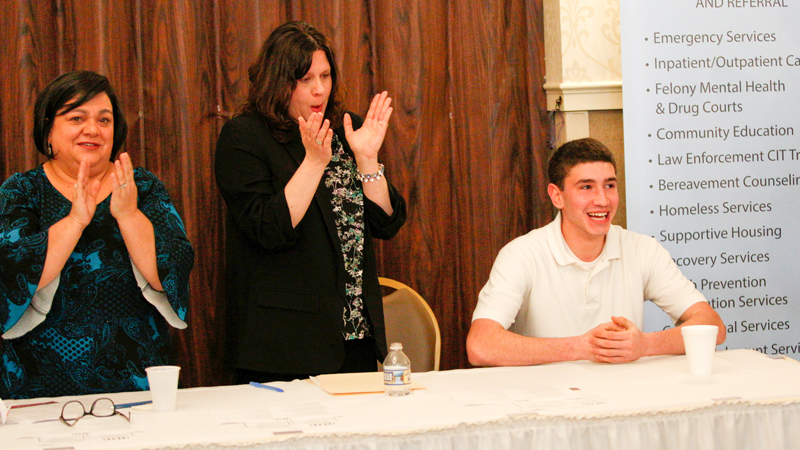Former Poland football star opens up about addiction

By Justin Dennis | jdennis@vindy.com
YOUNGSTOWN
Former Kent State All-MAC safety Luke Wollet recalled his senior year as a standout athlete with early pro draft potential. It was the same year he used heroin for the first time.
“Sports was my first drug” – it helped him hide his insecurities, he said.
The New Orleans Saints picked him up in the 2014 draft “as a heroin addict,” Wollet said. He later left the NFL for rehab and has been clean for more than two years.
He’s now helping others find the same path.
“I’ve seen that much guilt and shame that people carry” from addiction, Wollet said. “I just want people to know it’s all right to fall down. It’s about getting back up.”
The Poland native was one of several in the addiction recovery and mental-health spheres who spoke at an opioid summit Friday morning at Our Lady of Mount Carmel Church on drug use and adolescents, hosted by the Mahoning County Mental Health and Recovery Board.
“What I really like about this forum – it’s not the same people you see at everything,” said Duane Piccirilli, board executive director. “You see providers, elected officials; a lot of families are here, a lot of young people.
“I think it helps sometimes to hear someone who has recovered. ... It’s all about hope.”
Wollet’s opioid addiction, like so many others, began in a doctor’s office.
He received opioid pain medication for the first time after breaking his ankle during his sophomore year, he said. By his senior year, Wollet’s success mounted as heavily as the external pressures that come with chasing his childhood dreams, which were “right there, so close ... about to become a reality,” he said. When his prescriptions ran out, he turned to heroin from a street dealer.
“Before I knew it, I needed some type of drug to offer the relief sports gave me – to be the person I thought I had to be for others,” he told attendees.
“On Senior Night in college, with my parents wrapped in my arms, I was high on heroin.”
Wollet now works as a Faith in Recovery Outreach speaker for Banyan Treatment Center in Florida and gives similar talks at area schools.
“One of the biggest things we’re dealing with, especially from an adolescent’s point of view, is isolation. This is one of the biggest underlying issues with addiction,” he said. “We feel like nobody understands, like we’re the only people going through this problem.”
Dr. William Goldman of Akron Children’s Hospital spoke at length Friday about the effect drug use has on adolescent brain development. Most illicit drug use starts in adolescence, he said.
“The younger you start, the more likely you will grow into a substance use disorder,” he said.
Dr. Goldman recalled a visit from a young boy who admitted he was addicted to opioids. The boy’s brother had already been jailed for drug abuse. He wanted help. Dr. Goldman made some calls.
“‘This isn’t a pediatric problem. This is a one-off event,’” administrators told him. Dr. Goldman couldn’t help him. “I still think about that young man every day.”
That mentality on addiction was common in the early 2000s and 2010s, said Lori Criss, director of the Ohio Department of Mental Health and Addiction Services, who also spoke Friday. “I’m excited to hear that there are pediatricians that are also addictionologists – that’s kind of a breakthrough thing.”
Ohio’s suicide rate is the 14th highest in the country. Its overdose death rate is second only to West Virginia, she said.
“We recognize it’s not a ‘one-off’ opioid crisis. We have an addiction problem. We need to address mental illness and the risk factors that make young people susceptible to substance use disorders,” she said.
 43
43
